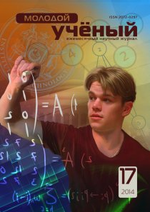Keywords: motivation, cognitive technology, fundamental approach, study of physics.
How to teach a modern student? This is an eternal question, as the objectives, content and methods of education must meet the needs of an ever-changing reality. In our intellectually intense and fast-paced, high-tech environment, the abundance of information often exceeds one's perception. Thus, new approaches are required in order to maintain effective teaching. Furthermore, the educational process is in need of new pedagogical approaches that will prepare students to work in today's constantly overloaded environment. Information exchange between people and their surrounding is now at a faster rate than it was 20–30 years ago. The increase in the rate of growth of information develops cognitive human activity. Hence, a primary aspect of modern education should be the formation of information competence of students.
Under these new conditions, new teaching methodologies must be created in order to provide the students tools for effective understanding of the real world and successful adaptation to life in the supersaturated environment, as well as information and intellectual development.
The essence of cognitive technology in teaching is providing the students' understanding of educational information. For this system assignments are created according to the principle: «Where, in any communicative situation it is useful to me». Tutorials should be prepared at different levels of cognitive development of students and create assignments at different levels of complexity. The task of the teacher is not only to raise security questions, and review the performance of students, but also to form the students' ability to self-esteem, self-control by involving it in an open discussion of «their» and «foreign» speech.
Student motivation is a necessary component of education which must be maintained throughout the process of learning. The motivation or desire to learn can be divided into two types: the desire of the end result, and the motivation for everyday learning.
We describe in this paper our experience accumulated over the years of teaching in engineering faculties in Ort Hermelin Academic College (Netanya) [Rosh, 2012]. All incoming students say they dream of becoming engineers and will invest all their efforts to achieve this goal. This reflects their desire of the final result. In our opinion it is useless. As a result, many students drop out after the first semester. Only those students that are ready for the daily, enormous effort required for higher education reach the final result.
Motivation is rapidly reduced if the level of the tasks does not match the level of training of the student. We use two methods to support the students' desire to learn. First, during the lectures we are involving students in the process of teaching by asking many questions. Thus the students get the impression that they themselves reach the desired result. Second, the problems for homework assignments are chosen so that one or more of the tasks address knowledge gaps, this requiring a search in textbooks or on the internet.
All this stimulates cognitive human activity. Another important aspect having a positive impact on student motivation is providing them with the ability to see how the individual parts add up to a whole [Efremova, 2007]. It is a challenge of the lecturer to teach students according to such a fundamental approach [Hewitt, 2011]. Here are some examples of drawing up such puzzles.
1) The equation of a simple harmonic oscillator describes the various physical phenomena: the oscillation mass on a spring, pendulum motion, motion of objects in a circle, the motion of charges in the electrical circuit LC, harmonic oscillator in quantum mechanics.
2) Accelerators, satellites and atoms as an example circular motion.
3) Electric current and hydrodynamics.
In the future, we believe that courses should be created describing the connection between related phenomena from different fields of science.
Reference:
1. Rosh F., Rutman Y. (2012), The way from practical engineer to engineer (poster), The 7-th Chais Conference for Innovation in Learning Technologies.Israel.p.310.
2. Efremova N. A., Rudkovskaya, V.F. & Sklyarova, E.A. (2007). The importance of a fundamental approach to the study of physics at the university. Fundamental studies, 5, 41–44.
3. Hewitt, P.G. (2011). Equations as guides to thinking and problem solving. The Physics Teacher, 49(5), 264.







